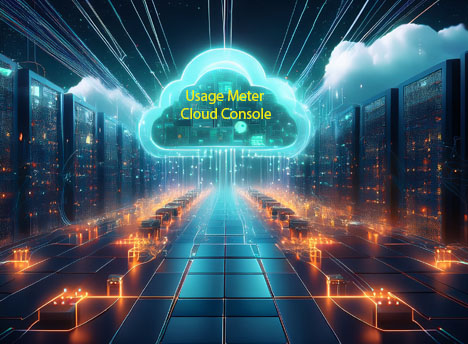

Modern enterprises face relentless pressure to deliver rapid, resilient digital experiences. The surge in data-driven applications, cloud adoption, and real-time analytics has made storage architecture a critical factor in business success. As NVMe arrays become standard in high-performance deployments, organizations are re-evaluating their data protection and performance strategies—particularly when comparing hardware RAID to software RAID solutions. Understanding the differences in performance, flexibility, and integration is essential to building a storage environment that meets present and future demands.
The Evolution of RAID for NVMe Storage
RAID (Redundant Array of Independent Disks) has evolved from humble beginnings supporting spinning disks to tackle today’s ultra-fast NVMe SSDs. The goal remains similar: aggregate drives for redundancy, increased IOPS, and improved data availability. However, the exponential leap in throughput and the architectural changes introduced by NVMe protocols mean not all RAID approaches are equal in this new era.
Hardware RAID relies on specialized controller cards—often featuring on-board cache and battery backup—to handle parity calculations and manage drive arrays independent of the server’s operating system. This design offloads RAID tasks from the server CPU and provides a streamlined, OS-agnostic management layer. Hardware RAID solutions are typically praised for their plug-and-play simplicity and robust protection against power loss, but in NVMe environments, their benefits can be offset by bandwidth bottlenecks and added latency from the controller layer.
Software RAID, on the other hand, executes array management within the host operating system, using the server’s CPU and memory to perform parity calculations and manage data distribution. This software-centric method is highly adaptable, supporting a variety of storage protocols and devices, and can be updated more rapidly to incorporate new features. As core counts and instruction set enhancements (like AVX) proliferate in modern CPUs, software RAID solutions—especially those optimized for parallelism—can match or exceed hardware RAID in raw performance for NVMe workloads.
NVMe Arrays: Shifting the RAID Performance Baseline
NVMe storage arrays have dramatically shifted the performance baseline for storage systems. Unlike SATA or SAS, NVMe connects directly to the PCIe bus, unlocking millions of IOPS and ultra-low latency. In this context, hardware RAID can become a bottleneck: even high-end controllers may cap out well before exhausting the bandwidth available from several NVMe drives. The controller’s own PCIe slot bandwidth and ASIC processing limits can introduce latency and restrict scalability—key considerations for organizations scaling workloads or deploying multi-petabyte datasets.
Benchmarks across industry sources show that for sequential reads and writes, both hardware and software RAID can boost baseline performance, but hardware RAID’s controller overhead is more pronounced with NVMe’s high throughput. In random I/O and high-queue-depth scenarios, software RAID—particularly modern, multi-threaded implementations—often delivers superior scaling and lower latency. When engineered for NVMe, these platforms can capitalize on the parallelism offered by both the drives and today’s multi-core CPUs.
Reliability, Flexibility, and Operational Impact
Performance is only one axis in the RAID decision. Hardware RAID continues to offer value in environments that require streamlined management, cross-OS compatibility, and battery-backed cache for critical write operations. This can be particularly useful for legacy applications and sectors where data integrity during power loss is non-negotiable.
Software RAID’s strengths lie in flexibility and rapid innovation. It is hardware-agnostic, can be managed entirely within modern operating systems, and often supports advanced features like snapshotting, thin provisioning, and integration with storage virtualization stacks. However, the trade-off is increased CPU and RAM utilization, which must be considered for hosts running intensive applications or virtualized workloads.
Dataplugs: Delivering Enterprise-Grade Dedicated Servers for Modern Storage Architectures
Selecting the right RAID approach is only one aspect of building a high-performance, future-ready infrastructure. The underlying server platform must offer robust hardware, reliable connectivity, and the flexibility to meet evolving requirements. Dataplugs provides dedicated server solutions in Hong Kong—one of Asia’s foremost internet hubs—delivering ultra-low latency to mainland China, Southeast Asia, and global destinations.
With a product portfolio featuring the latest Intel Xeon and AMD EPYC processors, up to 256 CPU cores, DDR4 and DDR5 ECC memory, and high-capacity Gen4 NVMe SSDs, Dataplugs equips organizations to deploy both hardware and software RAID configurations tailored to their needs. The company’s direct connectivity to multiple Tier 1 carriers, including China Telecom CN2, China Unicom, and China Mobile, ensures stable, high-speed network access even for latency-sensitive workloads.
Every Dataplugs bare metal server is dedicated to a single tenant, ensuring security and consistent performance free from resource contention. Businesses can customize CPU, memory, and storage to fit specific application demands—including all-flash NVMe options for maximum throughput. With enterprise features such as BGP-optimized intelligent networks, 99.9% uptime, remote IPMI management, anti-DDoS protection, and 24/7 on-site technical support, Dataplugs’ infrastructure is engineered for mission-critical reliability.
For organizations seeking a seamless transition to modern storage, Dataplugs supports rapid deployment, with preconfigured servers ready within an hour and custom builds available for specialized workloads. The flexibility to scale, combine multiple servers into private VLANs, and integrate advanced backup and security solutions makes Dataplugs a strategic partner for businesses navigating the complexities of NVMe storage and RAID implementation.
Strategic Considerations for RAID on NVMe
Ultimately, the decision between hardware and software RAID on NVMe arrays should be guided by workload profiles, required flexibility, and operational priorities:
- For legacy SAS/SATA deployments or when battery-backed caching is mission-critical, hardware RAID remains a strong option.
- For high-throughput NVMe environments where flexibility and performance scaling matter most, software RAID—especially platforms optimized for parallel computation—often delivers superior results.
- Hybrid approaches, combining hardware RAID for certain tiers and software RAID for NVMe pools, can provide a balance between reliability and performance.
- For organizations without in-house storage experts, leveraging a provider like Dataplugs simplifies the deployment of best-fit RAID solutions on state-of-the-art hardware, supported by local technical expertise.
Conclusion: Building Future-Ready Storage with Informed RAID Choices
As businesses look to the future, NVMe arrays and advanced RAID solutions are central to unlocking new levels of application speed, data availability, and operational agility. Whether optimizing for performance, reliability, or flexibility, understanding the benchmarks and trade-offs of hardware RAID versus software RAID is essential.
By partnering with a provider like Dataplugs—offering dedicated, enterprise-grade infrastructure with customizable RAID options—organizations can confidently architect storage environments that keep pace with today’s demands and tomorrow’s innovations. If you are evaluating your next storage upgrade or need guidance on RAID configuration for NVMe, consult with Dataplugs via live chat or sales@dataplugs.com for a tailored solution designed around your unique business goals.





